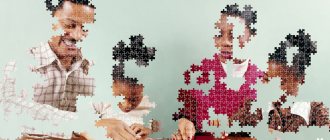Psychodrama is a method of psychotherapy in which people experience their pain through theatrical play. This technique helps to work through traumas, resolve conflicts, and improve relationships in the family, team, or other group. In addition, psychodrama helps to put an end to relationships with that person who has died or with whom it is impossible to contact.
The technique is suitable for working through past traumas, solving psychopathological problems in the present and visualizing a happy future. Let's take a closer look at what psychodrama is in psychology and consider its basic concepts.
Definition of the concept of method
The author of the psychodrama method is American psychiatrist and social psychologist Ya.L. Moreno. The psychodrama method was founded in the 20s of the 20th century. If we talk about the opening briefly, Moreno was inspired by the role-playing games of children, the sincerity and openness of the participants. The name of the technique is derived from two Greek words: psyche, which translates as “soul”, and drama, which means “action”.
Psychodrama is a method of group psychological therapy based on plot-role play. One person is the main character. All other participants are performers who help the main character solve the problem. The roles are strictly assigned by the presenter (psychologist). The main character plays himself, the rest of the people copy the verbal and non-verbal characteristics of the characters they got.
In psychology there is still no single definition of the concept of “psychodrama”. However, all psychologists agree that this technique allows a person to reveal his creative potential, become better acquainted with his inner world, develop and improve skills in interacting with society, and change his beliefs, attitudes and attitude towards current events. This is the goal of psychodrama. Psychodramatic, emotional feeling is what underlies healing through psychodrama.
The founder of psychodrama, Ya.L. Moreno called this technique art. The psychologist gave the following definition to this method: “Psychodrama is a method in which the truth of the soul is learned in action.” The main thing in this technique is play, improvisation, action. To fully understand your problem, you need to fully feel it and live it. Playing back allows you to look at the problem from different angles, remember and see something important that was missed until that moment. Psychodrama helps a person look into himself and change his thinking and behavior.
Psychodrama involves 5 main elements:
- Protagonist. This is the main participant of the session. He tries to understand himself, the other participants help him in this. He plays himself. The goal is the maximum disclosure of the true Self. It is extremely important that a person throws away all prohibitions and masks and becomes who he is. That is, it turns out that, on the contrary, he needs to stop playing, relax and give free rein to his feelings, thoughts, and emotions. During psychodrama you can do whatever you want.
- Director (psychologist, presenter, therapist). He helps to recreate the situation and distribute roles, guides, supports, controls. He does not indicate what to do and to whom, the protagonist is in charge of everything, but the psychologist helps to interpret everything that happens. In addition, the psychologist monitors the safety and health of all participants in the process, maintaining communicative and emotional interaction.
- Other Selves Follow the instructions of the presenter and protagonist, help the main character lose the problem. Others depict significant characters from the protagonist's life.
- Spectators. Active observers, listeners. They express their attitude to what is happening, support or criticize. At this time, the audience themselves are charged with emotions, and the protagonist reveals himself more actively. At any moment, one of the spectators can become a participant in the unfolding drama.
- Scene. The room itself, the platform where the action takes place. Moreno had a special, complex, multi-level design. Nowadays they don't pay much attention to this.
Psychodrama treatment is appropriate for psychological trauma. But besides this, psychodrama is suitable for working with dreams, fantasies and for preparing for upcoming stressful events. For example, you can play up an upcoming presentation with a report at work, reproduce the successful development and completion of the situation. This will help relieve stress before the upcoming real performance.
Interesting! Psychodrama is a method of group and individual psychotherapy. In the latter case, other people can be replaced with any objects.
What to expect at the meeting?
It's better not to expect anything. The classes are not the same.
Games are not repeated. Everything is born during class . Therefore, if you decide to engage in psychodrama, just trust the presenter, the people around you, and most importantly, yourself. Try to discard all masks, embarrassments and prejudices, and then you will get the maximum benefit from the lesson. You will become part of the events and be able to solve any difficult situation in the most unimaginable way for you. They won't give you advice. They may not even allow you to fully talk about all your feelings and experiences. You will be given a role. And your task is simply not to interfere with yourself.
Basic principles
Spontaneity and creativity are the main principles of psychodrama as a method of psychotherapy. Only under such conditions can a person fully open up and heal. And the main components of psychodrama according to Moreno are the theory of roles, the theory of spontaneity and sociometry.
Spontaneity theory
This means a flight of creative energy. It is either suppressed by a person, or finds expression in rapid adaptation to new conditions and new reactions in response to old stimuli. Creativity is the search and creation of something new, self-expression. In a broad sense, our whole life is a creative process.
Sociometry
A special technique that allows you to identify likes and dislikes in a group, the nature of the relationship between all participants, microgroups within the group, obvious and hidden leaders, outcasts, stars and neutrals. The result of sociometry is a detailed psychological portrait of the group (sociogram). Sociometry is needed in psychodrama so that the presenter correctly distributes people into groups.
Role theory
In psychodrama, the role is the participant’s habitual patterns of behavior. These are his verbal and non-verbal reactions in real life, his experience, beliefs, worldview. We constantly change roles depending on the situations and conditions in which we find ourselves.
Types of roles:
- bodily (somatic), for example, the role of the eater;
- mental, for example, the role of a jealous person, or a merry fellow;
- social, for example, the role of daughter, mother, wife;
- integrative (non-material), for example, the role of a believer or a person in love.
Roles are mastered in parallel with human development and precisely in the order in which we described them. Individual roles are repeated so often that they become the framework of the personality.
What is a psychotherapeutic group and what types of it exist?
A psychotherapeutic group is an artificially created association of several individuals, the purpose of which is psychotherapeutic support and satisfaction of the individual needs of each participant. The main features of a therapeutic group include the following: • Awareness of group members of their belonging to it. • Establishing interpersonal relationships in the group. • Group pressure, forcing each member of the group to act in accordance with its unspoken norms and hierarchy of statuses. • Changes in attitudes, thinking and behavior as a result of dynamic processes occurring in the group.
Next, I will briefly talk about the types of psychotherapeutic groups based on various criteria (composition, goals, duration of functioning, age, etc.).
In terms of quantitative composition, a psychotherapeutic group can be: • Small with up to 5-6 people. In such a small group, therapy is as close as possible to individual therapy, the patient receives more attention, which enhances the therapeutic effect of the sessions. But the effect of diversity of interactions is reduced, which makes it difficult to solve communication problems. • Large with up to 30 participants. In such a large association, the formation of small groups inevitably occurs with their own interests, hierarchy and unique forms of communication. This significantly complicates the work of the moderator and leads to a decrease in the therapeutic effect, even in the case of the work of two specialists - the psychotherapist himself and his assistant (co-therapist). • Optimal, which consists of 8-12 participants. Such a quantitative composition provides qualitative feedback between the participants and the emergence of emotional and psychological closeness between them. Based on their qualitative composition, psychotherapeutic groups are differentiated into the following: • Homogeneous (homogeneous) without significant differences between group members. This ensures the rapid formation of a cohesive support group, the achievement of the effect of acceptance and understanding, as well as the rapid receipt of a positive therapeutic result. The disadvantages of homogeneous groups are that they do not allow one to master the full variety of contacts with individuals of a different type; communication in a group is not deep enough. Typically, homogeneous associations with similar queries are created to quickly resolve specific problem situations. • Heterogeneous (heterogeneous), in which group members have different issues, views and interests. The heterogeneous composition makes it possible to realize that a specific situation can be assessed from different points of view. Feedback from unlike people allows the patient to more adequately assess his own role and purpose in society, and adjust his perception of the world, thinking and behavior. The work of a psychotherapist in a heterogeneous group requires a lot of effort and time from him, the level of conflict in the group itself is increased, but this format is the most effective for correcting behavioral disorders. The criterion for heterogeneity or homogeneity is such characteristics as: • Demographic characteristics (gender, age, level of education). • Personal characteristics (interests and views). • Clinical diagnosis and generality of symptoms. In addition, according to the nature of their functioning and the shift in composition, groups are differentiated into the following: • Closed type with a permanent composition and a pre-agreed number of sessions. Replenishment of the group with new members is not provided, and the departure of participants is possible only at their request. • Open psychotherapeutic groups also do not change quantitatively, but the composition may be updated. Some members of the group are replaced by others, sometimes the moderator even changes, and the work time of such a group is not limited. And one more nuance. You may have come across in various information sources and on the pages of individual websites the concept of a psychocorrectional group. Naturally, readers have a question: is this the same thing as a psychotherapeutic group, or something special, pursuing other goals. I would like to say that psychocorrection is part of psychotherapy and is of practical importance only in the Russian Federation and the countries of the post-Soviet space. It is believed that only specialists with medical education and specialization in psychotherapy can deal with it. In the West, psychocorrection is carried out by psychologists and only in correctional institutions.
Modern domestic trends in active practice by psychologists and psychotherapists without medical education have led to a clearer distinction between psychotherapy and psychocorrection. Let's start with the name, if psychotherapy means treating the soul, then correction means correction. Psychotherapy involves a structural transformation of personality based on a deep analysis of mental problems and penetration into the unconscious sphere of human mental activity. The therapeutic effect is achieved by influencing the psyche and through the psyche of the patient. Psychocorrection is not aimed at changing the personality, but only helps to eliminate unproductive forms of behavior and interaction in society that interfere with the successful self-development of the individual and his social adaptation. In practice, psychocorrection adapts the human psyche to the rapidly changing conditions of modern reality, making it more flexible and stress-resistant. Accordingly, psychocorrectional groups have their own characteristics and different directions.
Among them are the following groups: • solutions to specific problems; • organizational development for company management; • training in interpersonal skills and management skills; • self-development and self-improvement; • therapeutic groups.
In addition, psychocorrectional groups are differentiated into: • Authoritarian type, i.e. focused on the leader (skills training groups, so-called T-groups). • Focused primarily on group members with the formation of a friendly psychological climate and psychological support (meeting groups). Psychocorrectional groups can rightfully be led by psychologists who have basic and higher psychological education, as well as those who participate in retraining programs.
Directions of psychodrama
Modern directions of psychodrama:
- Hypnodrama. The game is combined with immersing participants in a hypnotic trance. Under such conditions, the subconscious is included in the work as much as possible, the participants relax and recover, rest mentally and somatically.
- Biodrama. People portray animals that they resemble. This technique is more often used when working with children, since it is easier for them to talk about themselves through other characters, for example, through animals.
- Sociodrama. Within a stable group, a person acts out the conflict in which he became a participant in another group.
- Puppet drama. Dolls are used instead of people. This direction is often used when working with children.
- Improvisation. There is no script, all participants act freely.
Interesting! Moreno did not leave direct instructions and theoretical foundations of psychodrama. Psychologists had to recreate the theory bit by bit using the materials that had survived. Therefore, there are many varieties of this technique, but the principles and structure are preserved.
Are there any contraindications for group psychotherapy?
Group psychotherapy has its own indications and contraindications, which are identified by the psychotherapist at the stage of the initial interview. As for indications, they cover a wide range of mental disorders - from neuroses and psychosomatic disorders to schizophrenia. For some people, group therapy is not recommended at all. This may be due to both individual mental characteristics and life circumstances. The inclusion of such patients in the group threatens further negative dynamics, lack of progress and deterioration of the emotional background of all participants in group sessions. The choice of the type of psychotherapeutic group and method of psychotherapy depends on the indications. For example, talking therapy is suitable for solving ordinary everyday problems, CBT is suitable for treating phobias, Gestalt therapy is suitable for correcting behavior and character, and Ericksonian hypnosis is suitable for treating addictions.
Contraindications for group therapy are the following conditions: • Low level of intelligence and decreased cognitive functions. • Psychoses, especially those accompanied by delusions of persecution and relationships, a tendency to physical violence and hallucinations. • Incurable diseases and infections. • Mental disorders in the decompensation phase. Relative contraindications are the presence of physical disabilities in patients. In addition, it is not recommended to include in one group persons connected by work, family and other types of relationships in everyday life. The following circumstances may be the reason for exclusion from the group: • Violation of the rules by the patient and non-compliance with the session schedule. By the way, the optimal mode of work is 3-4 classes per week lasting 60-90 minutes. • Mental incompatibility with other group members and increased conflict. • Disappearance of the patient's motivation to continue treatment.
Kinds
Moreno identified the following types of psychodrama (forms of psychodrama):
- A psychodrama led by a protagonist. The pain of one of the participants is played out.
- Psychodrama that focuses on the group. A problem involving a group of people is being sorted out.
- Psychodrama focused on the theme. A problem that is relevant to everyone present is discussed. We can talk about both internal conflicts and events in the outside world, including global news.
As for the areas of application, this method is universal. There are no special names or classifications for this. Psychodrama is suitable for working with children, adults, parents, couples, teams, companies, states, countries, etc. Psychodrama is suitable for counseling and treatment in all categories of problems.
Types of relationships
Moreno identified three types of relationships between people from the perspective of psychodrama (three types of connection):
- Transfer. One person attributes to another such negative qualities and actions that he actually does not have. Usually this happens for a reason, but based on trauma. For example, a person transfers his mother’s cruelty to all women who look somewhat similar to her.
- Feeling (in the author's terminology). A person perceives another as a separate and unique person, tries to understand him, look at the situation through his eyes, feel what that person feels.
- Tele. By this Moreno meant mutual understanding between people or mutual alienation.
The last two types are related to adequate perception and self-perception. The ability to empathize with another person and understand his attitude towards his opponent is a sign of mental health.
A little about anxiety disorders
What people with anxiety disorders have in common is fear. However, in speech “fear” can mean different types of it. “Healthy real fear” - as a rule, is a signal of a real danger and can be overcome when a person takes some action aimed at the outside world. “Painful fears” can be stronger than real ones and are not related to a specific situation. They, in turn, are divided into “exaggerated fears” - when there is real fear in a situation, but a person does not have the ability to cope with it and he feels weak and helpless, and the fear existing in the situation is perceived as something larger and stronger than there is no way to cope. What is called “making a mountain out of a mountain.”
“Repressed fears in phobias” are a reaction of fear to an event in the present, but the reasons for such a reaction are in the person’s past and, as a rule, are not realized. As a result, a person does not have the opportunity to do anything about this fear in the present; he continues to be afraid of meeting some specific event related to the past.
“Panic attacks” are not initially associated with a specific object of fear. They occur suddenly and are accompanied by various bodily phenomena: increased heart rate, chest pain, which can be mistakenly identified as heart pain, for example. The head begins to feel dizzy and there is a lack of air. A person begins to feel that he is completely losing control over himself, his mental well-being, that he could die. Fear completely covers a person, paralyzing the ability to cope with it. People with panic disorder often say that in such situations they need the presence of another person to help them return to normal. A person is not able to understand the cause of a panic attack and, as a rule, tries to find some explanation for this. For example, he begins to believe that he has been “jinxed”, “damaged” and runs around to “traditional healers”. And surprisingly, he actually gets better for a while. But, only for a while.
“Secondary fear of a panic attack” is an additional fear that occurs as a result of a panic disorder. This can include, for example, agoraphobia - a person begins to be afraid to leave the house, begins to be afraid of crowded places, or to be on the street alone. Social fears - when a person believes that others may judge him, mock him, or reject him in a panic attack situation. A person’s life is becoming increasingly saturated with fear, which begins to impose significant restrictions on the ability to satisfy important needs; the person feels deprived of the opportunity to be free from fear and restrictions.
Various defensive reactions appear in human behavior. For example, leaving the house only when accompanied by another person; turn off or dim the lights in the room at night, when bright light begins to cause anxiety and discomfort; stops using public transport or driving a car; Wear sunglasses at all times to prevent bright sunlight from causing anxiety, or leave the house after sunset. Thus, it strengthens and maintains the presence of panic disorder.
Stages of psychodrama practice
There are three phases of psychodrama:
- Warming up At this stage, the facilitator offers the participants several exercises for unity, getting to know each other, and recreating a trusting atmosphere. This is important so that participants can be open and talk about personal things. At this stage, topics for discussion are identified.
- Action. Direct dramatization of the selected problem. The presenter appoints the protagonist and helps him assign other roles.
- Schering. Analysis of the situation, active discussion of the completed game. The protagonist talks about what conclusions he made. The facilitator helps interpret what the person is feeling.
Participants choose one of the psychodrama techniques: duplication, mirror or role exchange.
In the first case, the other person becomes a reflection of the main character's subconscious. The understudy speaks out, portrays what is suppressed in the main person. If the understudy is right, then the hero agrees and repeats it.
When using the “Mirror” psychodrama technique, another person portrays the main character, and he looks at him as his reflection. Both help the protagonist understand himself, understand himself better, and look at himself from the outside.
Swapping roles makes it possible to look at a situation through the eyes of another person. At any moment, the main character changes roles with one of the participants and continues the game in his role. This helps you understand the other person better.
How does group psychotherapy differ from individual therapy?
The differences are fundamental and boil down to the following aspects: • In the individual format, the main method of influence is the dialogue between the psychotherapist and the patient; in group therapy, the main tool is the psychotherapeutic group. The choice of treatment direction depends on the characteristics of the person’s psyche, the depth and duration of the mental disorder. This could be psychoanalysis, Gestalt therapy, cognitive behavioral therapy, etc. • During individual sessions, the patient is confident in maintaining the secret of his “confession,” which helps him open up more, because Not everyone will decide to bring their problems to public attention. In addition, the time and attention of a specialist belongs only to one specific person, and is not “sprayed”, in his opinion, between group members. For self-centered individuals, this is a rather significant argument. Such patients require only an individual approach, while others want to find out the opinions of other people about their problem, especially with similar life situations, and still others can be successfully treated using both methods. • The advantage of group psychotherapy is that with its help it is much easier to resolve communication issues in society. During group classes, the circle of communication expands, with a variety of people, new skills of communicative behavior are practiced and tested, and changes in thinking occur towards increased self-esteem, self-confidence and freedom of expression of emotions. Mercantile interests should not be neglected, because Group classes are much cheaper than individual sessions, and are almost as effective as them. The choice of psychotherapy format is up to the patient, but it is in his best interests to listen to the recommendations of his psychotherapist.
Exercises
Let us briefly consider several popular exercises using psychodrama.
Shop
Participants are divided into sellers and buyers. Subsequently, dividing into pairs or subgroups, the participants reproduce conflicts and find a way out of them. Different themes are used, and participants often change roles. This exercise helps develop social and communication skills. Each participant learns to defend their position and overcome conflicts with dignity and seek compromises.
Bus
All participants are divided into “hares” (free riders) and controllers. The first sit in the inner circle, the second in the outer. Free riders make excuses, and controllers try to shame them, but at the same time put themselves in their position. At the end of the action, the participants discuss each other's game. During interaction, internal blocks, complexes and problems of people are identified, those features that prevent them from interacting with society. Each participant learns to defend their opinion, refuse, resist, and maintain composure in uncomfortable situations.
Family
The protagonist distributes roles in the game, also assigns his role to someone and describes what situation from his family the participants should reproduce. This exercise allows the main character to look at himself from the outside and look at other family members differently. After reproducing the situation, a discussion is held.










